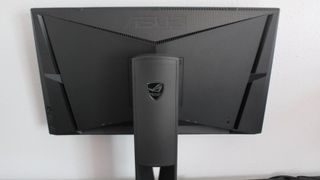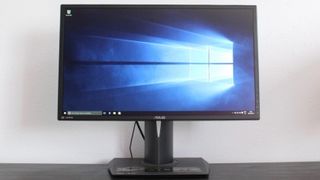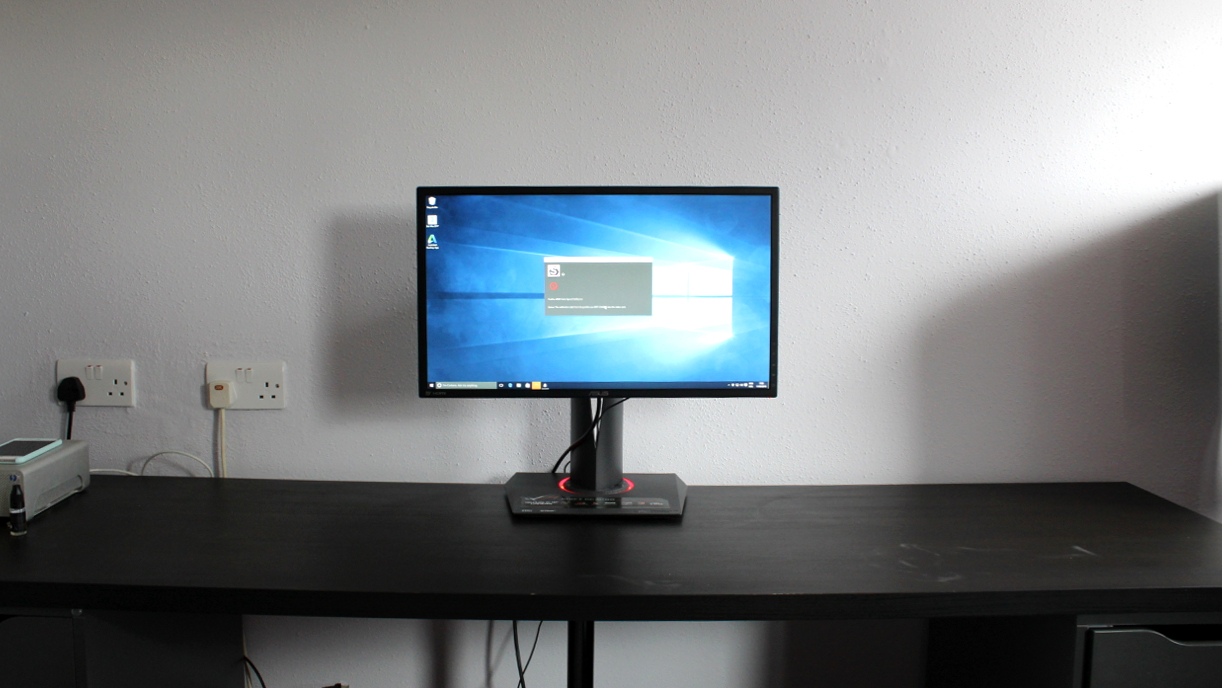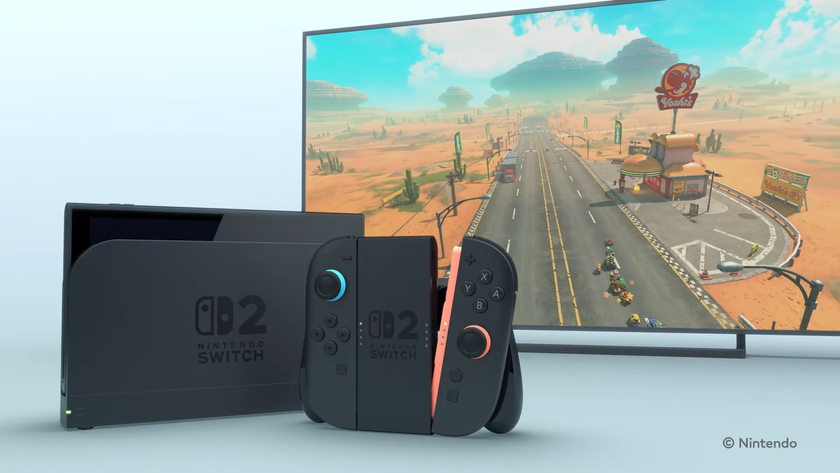TechRadar Verdict
If you own an Nvidia graphics card and you spend more time gaming on your PC than anything else, a 180Hz display with G-Sync is absolutely worth the money. But otherwise, you could choose a larger display, IPS panel technology or a higher resolution for similar money.
Pros
- +
Cheapest G-Sync display on the market
- +
Amazing 180Hz refresh rate
- +
Extremely well-designed
Cons
- -
Worse viewing angles with TN panel
- -
Just two display inputs
- -
Only 24 inches
Why you can trust TechRadar
Hot on the heels of one Asus gaming display that we've recently tested, the superbly priced Asus MG248Q, comes another closely related gaming monitor, the ROG Swift PG248Q.
It bears a number of similarities: it's a 24-inch screen with a native 1080p resolution and a twisted nematic (TN) panel capable of 1ms response times. It looks almost identical, the feature set is closely linked, and the overall dimensions are just about the same.
TN screens are generally cheaper than IPS, and the picture quality is slightly worse, due to narrower viewing angles. This is true of any TN panel, and is the same for both the MG248Q and the ROG Swift PG248Q.
But a crucial difference is that, while the MG248Q offers Adaptive Sync technology, which eliminates the 'tearing' effect in 3D games to make animation look a whole lot smoother, the PG248Q features Nvidia's equivalent G-Sync technology. G-Sync only works with GeForce graphics cards, while Adaptive Sync works with both AMD and Intel graphics cards.

That affects a few more aspects of the Asus ROG Swift PG248Q. The G-Sync 'module' costs a lot more to integrate into a display than an Adaptive Sync module, and therefore the ROG Swift PG248Q has a much higher price tag of £400 (around $520), compared with £269 (around $350) for the MG248Q.
You might think Asus is looking to fleece Nvidia users, but if anyone is to blame for this higher pricing, it's Nvidia, as all G-Sync displays on the market cost over £100 (around $130) more than FreeSync or Adaptive Sync products. Nvidia might make an argument for higher production costs or greater complexity, but whatever the reason, it seems that if you want G-Sync then you have to pay more for it.
There are a few more things to differentiate the ROG Swift PG248Q though. One is a higher refresh rate, achieved via an 'overclocking' section in the on-screen menus. It can go up to a whopping 180Hz, or 160Hz if this setting is left disabled. That's very fast indeed, and is three times the refresh rate of most standard displays.
Although to hit those refresh rates, you'll need a PC that can churn out 180fps. In the most recent games, that's a tall ask for even some high-end gaming rigs.

Focusing on the remaining aspects of the ROG Swift PG248Q, you might get a sense of deja-vu if you've already checked out the MG248Q. It has the same dark grey design and slim bezel, the stand is the same shape (a tad larger this time though, and it comes pre-attached to the panel) and once again there's a five-way joystick at the back for quick and easy navigation of the on-screen menus and shortcuts.
The design is slightly more plain though. The amount of red in the stand and at the rear has been seriously toned down, and the funky random lines and patterns on the back have been removed, with just a smooth textured dark grey plastic, which is something of a shame as it loses some of the individuality that was present on the MG248Q.














